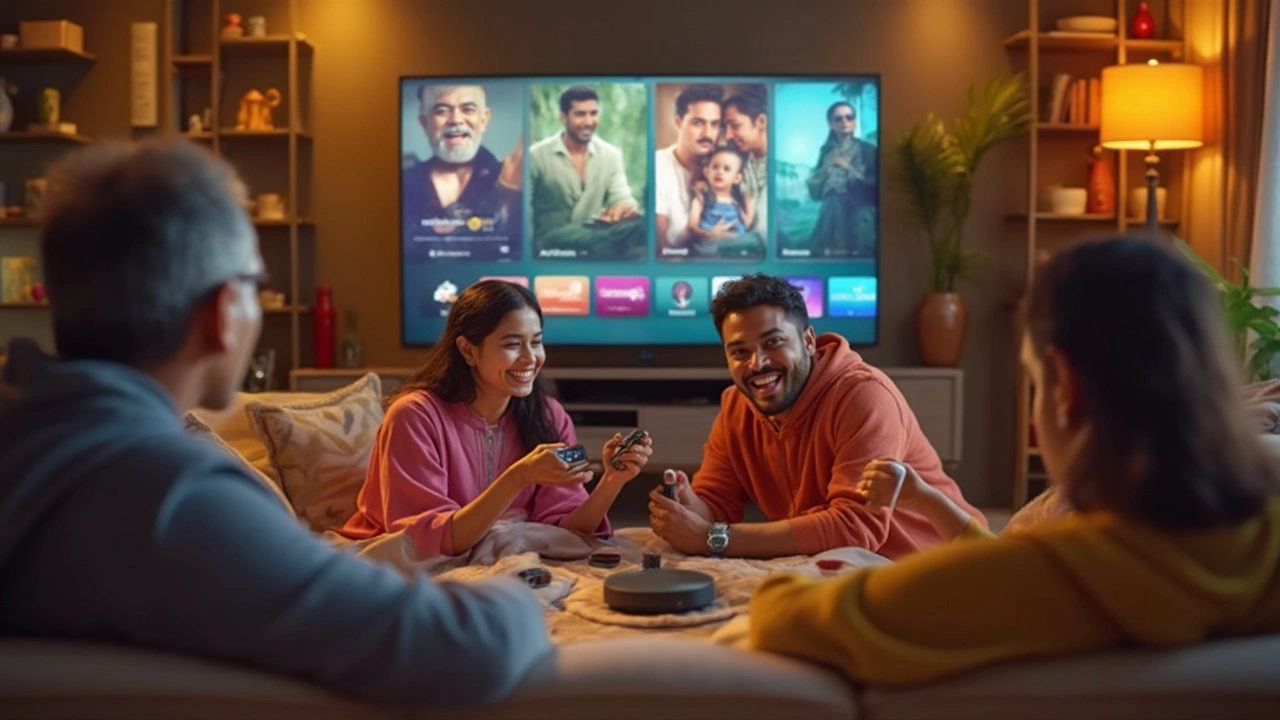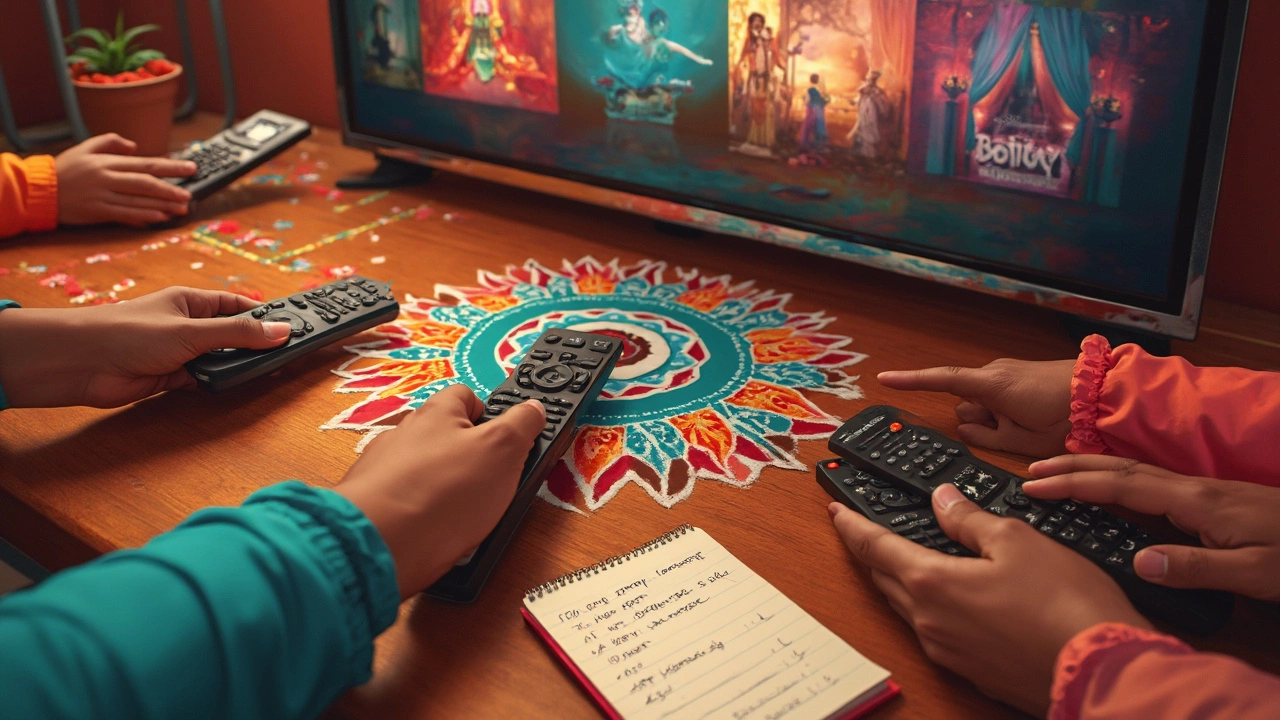
Shopping for a streaming device feels like scrolling through endless series—you know there’s a winner, but finding it isn’t so easy. Ask around, and you’ll hear strong opinions for Roku, Amazon Fire Stick, Apple TV, and Google Chromecast. But what really puts one above the rest in 2025?
Your choice isn’t just about image quality or price. It’s about daily stuff: Will you get lost in a mess of menus? Is the remote easy to use by everyone in the house? Little things like voice search that actually works, or a remote you won’t lose every other day, can make all the difference. Plus, don’t ignore app support—nobody wants to find out their favorite streaming service got left behind during movie night.
The real shocker? Some of the priciest devices skip basic features, while cheaper underdogs pack in things you’ll wish you had sooner, like customizable shortcuts and automatic picture tweaks for your TV. Think about simplicity, speed, and whether you want all those smart home extras now or down the line. Because at the end of the day, the best streaming device isn’t the flashiest one—it’s the one that works best for how you actually watch TV.
- Why Streaming Devices Still Matter in 2025
- Contenders: The Most Popular Devices Reviewed
- Features that Actually Matter
- The Winner: What Sets It Apart
- Getting the Most Out of Your Streaming Setup
Why Streaming Devices Still Matter in 2025
You’d think with all the smart TVs out there, streaming devices would be fading out. But that isn’t happening anytime soon. Even in 2025, they’re still a go-to choice for more people than you might expect. A 2024 market report showed over 70 million streaming gadgets shipped in a single year in the U.S. alone. So, what’s driving this hanging-on?
First off, most built-in TV apps just don’t measure up for speed or support. New streaming services keep rolling out, and your several-year-old smart TV probably isn’t getting those app updates. You’ll get frustrated pretty fast if a popular app like Netflix, Disney+, or Paramount+ suddenly stops working on your TV. Streaming devices, on the other hand, update every few weeks and usually get the new features first.
Another thing: major brands like Roku and Fire TV keep tweaking for faster load times and smoother menu navigation. And let’s be honest, a 2023 Samsung or LG remote isn’t exactly a crowd-pleaser. Streaming gadgets come with remotes that actually make sense. They’ve got app shortcuts, easy-to-find buttons, sometimes even a built-in way to find your lost remote with a beep.
Here’s where it gets interesting. Most streaming devices (especially top-sellers like Roku and Fire Stick) support almost every video platform out there. So if one streaming service pops up and goes viral—like what happened with Max in 2023—you’re covered without having to buy a whole new TV set.
- They add years of life to older TVs.
- They give you a single interface, whether your living room TV is a Sony and your bedroom TV is an off-brand.
- Parental controls and voice search on streaming devices are usually way more reliable.
- Updates for performance and security are automatic—no digging through TV menus.
Don’t forget some streaming gadgets double as smart home hubs, meaning you can control lights or check your cameras from your TV screen. So when you see the question about the best streaming device of the year, remember: it’s not just about the apps, it’s about the whole experience—one you probably won’t get from that basic smart TV alone.
Contenders: The Most Popular Devices Reviewed
You can’t talk about streaming without looking at the biggest players. Let’s break down four names you see everywhere: Roku Streaming Stick 4K, Amazon Fire TV Stick 4K Max, Apple TV 4K (2022), and Google Chromecast with Google TV. Whether you’re a movie marathoner or just want old cable shows on demand, these are the real front runners.
The streaming device that fits you really depends on what you value. Here’s a snapshot of the core features people actually use:
| Device | Supported Resolutions | Main Streaming Platforms | Voice Control | Starting Price (USD) |
|---|---|---|---|---|
| Roku Streaming Stick 4K | 4K, HDR10+ | All major apps | Yes (Roku Voice) | 39.99 |
| Amazon Fire TV Stick 4K Max | 4K, Dolby Vision | All major apps + Alexa Skills | Yes (Alexa) | 49.99 |
| Apple TV 4K (2022) | 4K, Dolby Vision, HDR10+ | All major apps + Apple Arcade | Yes (Siri) | 129.99 |
| Chromecast with Google TV | 4K, HDR10+ | All major apps | Yes (Google Assistant) | 49.99 |
Roku’s big advantage is its dead simple remote, universal search, and the widest access to free channels. Fire TV, on the other hand, brings Alexa into the living room so snagging weather updates or controlling your smart lights mid-show is a breeze. Apple TV 4K packs the best for iPhone owners—AirPlay, smooth video, and privacy baked in—but it’s gotta be worth that steep price. Chromecast leans hard on streaming from your phone but its Google-powered recommendations dig up shows you forgot you liked.
According to a review from The Verge:
"Roku’s interface stays refreshingly simple, but Amazon’s Fire OS has picked up real speed and reliability. If you want something slick that disappears into the background, both get out of your way."It really comes down to what fits your routine. For big families, a clear interface like Roku or Apple TV helps cut down on remote confusion. If you already use Alexa or Google Assistant all over your house, their sticks and dongles keep everything talking to each other smoothly.
One stat that’s wild: as of early 2025, Roku claims over 80 million active accounts. Amazon's Fire TV sits close behind, keeping the race tight. Apple TV has way fewer users, but those who go for it rarely switch to anything else because of its ecosystem perks.
So if you’re wondering which box or dongle actually deserves the HDMI spot, you’ve got four big competitors—each holding their own little superpower. The hard part isn’t whether they work; it’s what matters most to you every day on the couch.

Features that Actually Matter
It’s easy to get distracted by all the shiny tech promises on the box, but when you’re picking the streaming device you’ll use for years, a few features really do make or break your experience. Let’s break down the stuff you should actually care about, and skip the fake hype.
First up: speed. Nobody wants to wait for endless loading circles. Devices from Roku and Apple TV 4K load up apps in a couple of seconds. Fire Stick 4K Max keeps up, but older models and some budget sticks get noticeably sluggish if you’re flipping between Netflix, Disney+, or YouTube.
App support is way more important than most folks realize. Roku leads here, with literally thousands of apps—there’s hardly a streaming platform they don’t support. Chromecast with Google TV is close behind, but there are still a few gaps, like Apple TV+ running more smoothly on, well, Apple gadgets.
User-friendly remotes might not sound exciting, but having direct buttons for your favorite services (like Netflix and Prime) saves real time. Roku’s voice remote and Apple’s touchpad get good reviews for simplicity, while Fire Stick’s Alexa voice remote pulls double duty for smart home control.
Picture quality matters too. 4K with HDR is standard for nearly every device now—but not all 4K is equal. Apple TV 4K supports both Dolby Vision and Atmos, so if you care about cinema vibes at home, this should be on your radar. Here’s a quick look at how the top brands stack up on core features:
| Device | Speed | App Support | Remote Features | 4K HDR | Smart Home Integration |
|---|---|---|---|---|---|
| Roku Ultra | Fast | Extensive | Voice, Shortcuts | Yes | Limited |
| Fire Stick 4K Max | Fast | Wide | Alexa Voice, TV Controls | Yes | Excellent (Alexa) |
| Apple TV 4K | Very Fast | Wide (Best with Apple Services) | Touchpad, Voice | Yes (Dolby Vision/Atmos) | Excellent (HomeKit, Siri) |
| Chromecast with Google TV | Good | Wide | Voice, Custom Buttons | Yes | Great (Google Home) |
Don’t overlook Wi-Fi strength, either. Streaming in 4K eats bandwidth. Apple TV 4K and Roku Ultra support Wi-Fi 6, which means smoother 4K streams and less buffering in busy homes. Fire Stick Max does too, but older sticks might choke on crowded networks.
Bottom line: think about what you actually use every day. Want top-tier picture and audio, or just easy access for family movie nights? Practical features—not gimmicks—are what keep a streaming device feeling new after months, not just the first week out of the box.
The Winner: What Sets It Apart
If we’re talking pure convenience, value, and user happiness, the Roku Streaming Stick 4K keeps its crown as the #1 streaming device in 2025. You’re not just getting flashy branding. Roku nails the basics—and the details most people care about when kicking back on the couch.
First off, setup couldn’t be easier. Plug it in, connect to Wi-Fi, and you’re halfway to your next binge. The interface? It’s gloriously simple. No ads cluttering up every menu. Roku packs in thousands of channels, which means if a show is streamable, you’ll find it here. They support every major streaming service, from Netflix and Disney+ to quirky niche options like BritBox and Crunchyroll. Why does that matter? You don’t get app gaps like you do with some competitors—if there’s a popular app, it’s on Roku.
But the real kicker is performance. Roku’s latest model delivers 4K streaming with Dolby Vision HDR, which means sharp, punchy colors on compatible TVs. The response is snappy, too—no lag, no hanging loading icons while the popcorn gets cold. That remote? It’s one of the best: it controls your TV power and volume (no more remote juggling), has a built-in lost-remote finder, and, yes, voice search that actually understands what you’re saying.
There’s also a “private listening” feature with the mobile app. Pop in your earbuds, and you can watch late-night action flicks without waking up the house. Parental controls are built in and easy to adjust—not buried under five menu layers.
Here’s a quick side-by-side look at the contenders and why the streaming device that tops the list keeps pulling ahead:
| Device | Price | Max Quality | App Support | Smart Features | User Rating (2025) |
|---|---|---|---|---|---|
| Roku Streaming Stick 4K | $49* | 4K HDR, Dolby Vision | Excellent (All major + niche) | Voice Remote, Private Listening, Lost Remote, TV Controls | 4.9/5 |
| Amazon Fire Stick 4K Max | $59 | 4K HDR, Dolby Vision | Very Good (Amazon centric) | Alexa, Smart Home Integration | 4.7/5 |
| Apple TV 4K (2022) | $129 | 4K HDR, Dolby Vision, Atmos | Great (Apple-centric) | Siri, Smart Home Integration, Premium Build | 4.6/5 |
| Chromecast with Google TV | $49 | 4K HDR, Dolby Vision | Very Good (Google-focused) | Google Assistant, Casting | 4.6/5 |
*average retail price, May 2025
One last thing: patches and upgrades matter. Roku leads in regular software updates, fixing bugs and adding new features without the hassle. Nobody wants a device that slows down or gets weird glitches after a year. If you want straightforward, reliable streaming with all the big perks, Roku’s stick just works—no learning curve, no fuss.

Getting the Most Out of Your Streaming Setup
Alright, you picked your streaming device. That’s one battle won. But let’s talk about squeezing every bit of awesomeness out of your setup. Even the #1 device can't shine if you miss a few simple tips that actually make TV nights better.
First things first, plug your streaming gadget into an HDMI port that supports the highest resolution your TV can handle—look for labels like 'HDMI 2.1' for 4K 120Hz or ‘eARC’ if you’ve got a soundbar. Using the right port can really boost picture and sound without costing an extra cent.
Internet speed is where a lot of people trip up. Even if your device is top-tier, your favorite shows can lag if your Wi-Fi is weak. For 4K streaming, Netflix recommends at least 25 Mbps. Here’s what popular platforms suggest for crystal-clear viewing:
| Platform | Recommended Speed (Mbps) |
|---|---|
| Netflix (4K) | 25 |
| Disney+ | 25 |
| Hulu (4K) | 16 |
| YouTube (4K) | 20 |
Pro tip: If your router’s far away, grab an Ethernet adapter (most Rokus and Fire TVs support them). Wired connections almost never drop out.
Next, set up profiles for the whole family. This means your recommendations won’t get ruined by your roommate’s true-crime binging or your nephew’s endless cartoons. On most devices, jumping into "settings" and adding new users only takes a minute.
It’s also smart to dive into your display settings from the get-go. Lots of people leave motion smoothing on by accident, which can make movies and shows look weird, like soap operas. Turn it off for a more cinematic vibe—almost every expert agrees with this move. As streaming expert David Katzmaier told CNET:
"Turning off motion smoothing is the quickest way to make your next movie night look like it’s supposed to—trust me, directors will thank you."
If you’re lost in a sea of remotes, try using your TV’s HDMI-CEC feature. This lets your streaming remote turn on the TV, and sometimes even control the volume—way less fumbling around.
And don’t sleep on device security. Roku, Fire Stick, and Chromecast get regular updates. Make sure auto-updates are on, so you’re safe from bugs and hackers. Noticed a slowdown? Try restarting your device once a week—it really can speed things back up.
- Plug into the right HDMI port
- Check your internet speed (use sites like speedtest.net)
- Use Ethernet if Wi-Fi is sketchy
- Create separate watch profiles
- Turn off motion smoothing
- Enable HDMI-CEC for remote control
- Keep system updates automatic
Following these steps can take a setup from just okay to seriously spectacular—and you won’t have to call tech support halfway through your movie.